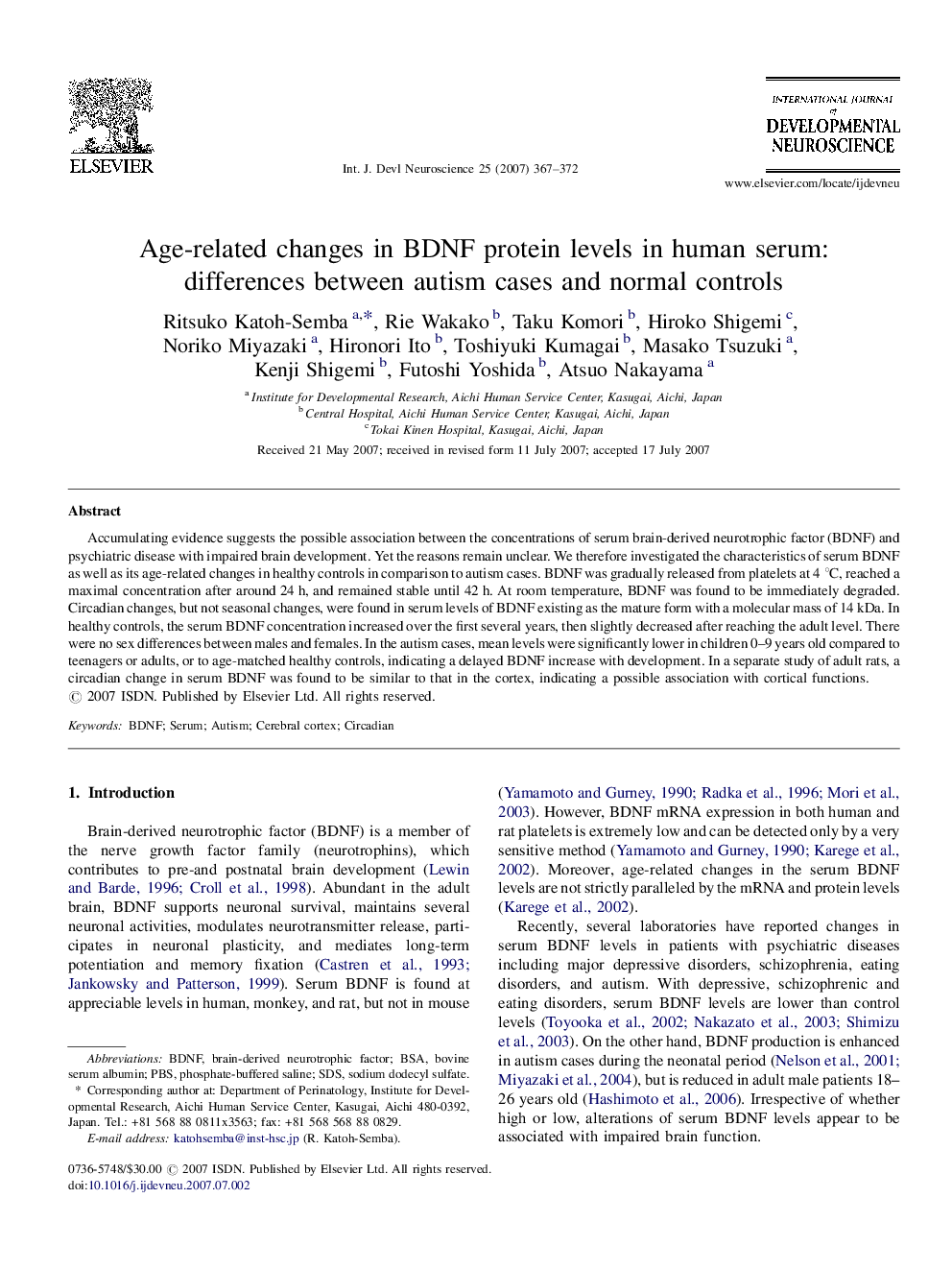| Article ID | Journal | Published Year | Pages | File Type |
|---|---|---|---|---|
| 2786661 | International Journal of Developmental Neuroscience | 2007 | 6 Pages |
Accumulating evidence suggests the possible association between the concentrations of serum brain-derived neurotrophic factor (BDNF) and psychiatric disease with impaired brain development. Yet the reasons remain unclear. We therefore investigated the characteristics of serum BDNF as well as its age-related changes in healthy controls in comparison to autism cases. BDNF was gradually released from platelets at 4 °C, reached a maximal concentration after around 24 h, and remained stable until 42 h. At room temperature, BDNF was found to be immediately degraded. Circadian changes, but not seasonal changes, were found in serum levels of BDNF existing as the mature form with a molecular mass of 14 kDa. In healthy controls, the serum BDNF concentration increased over the first several years, then slightly decreased after reaching the adult level. There were no sex differences between males and females. In the autism cases, mean levels were significantly lower in children 0–9 years old compared to teenagers or adults, or to age-matched healthy controls, indicating a delayed BDNF increase with development. In a separate study of adult rats, a circadian change in serum BDNF was found to be similar to that in the cortex, indicating a possible association with cortical functions.
